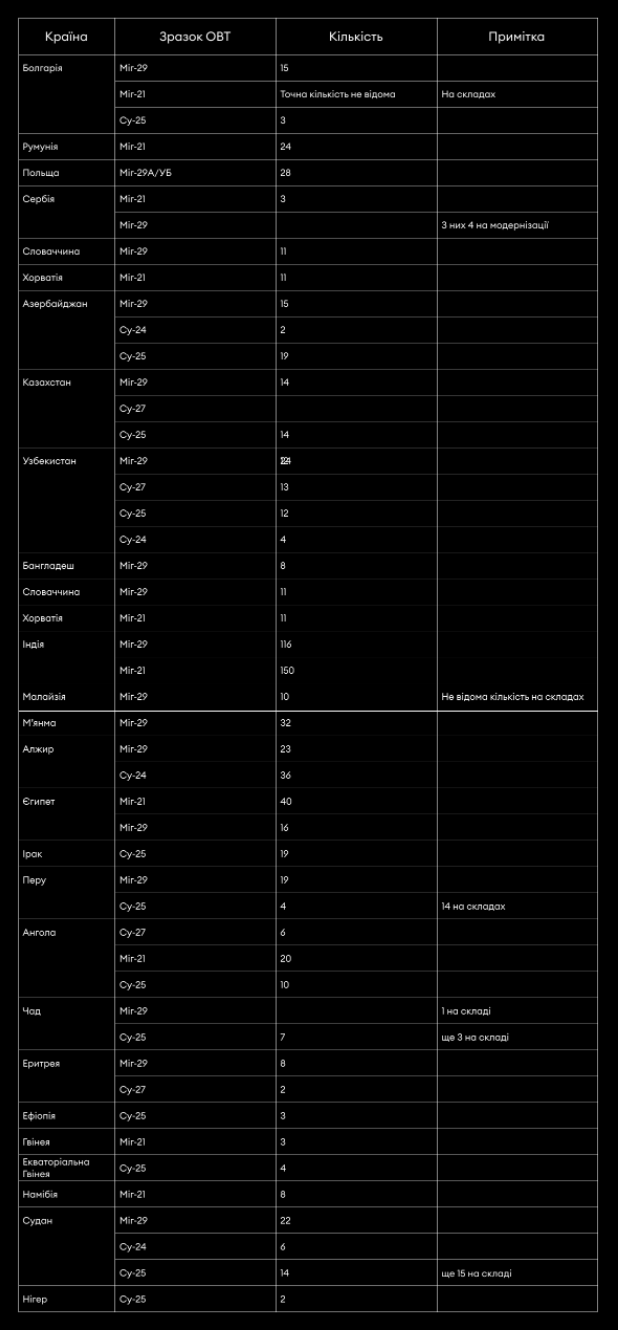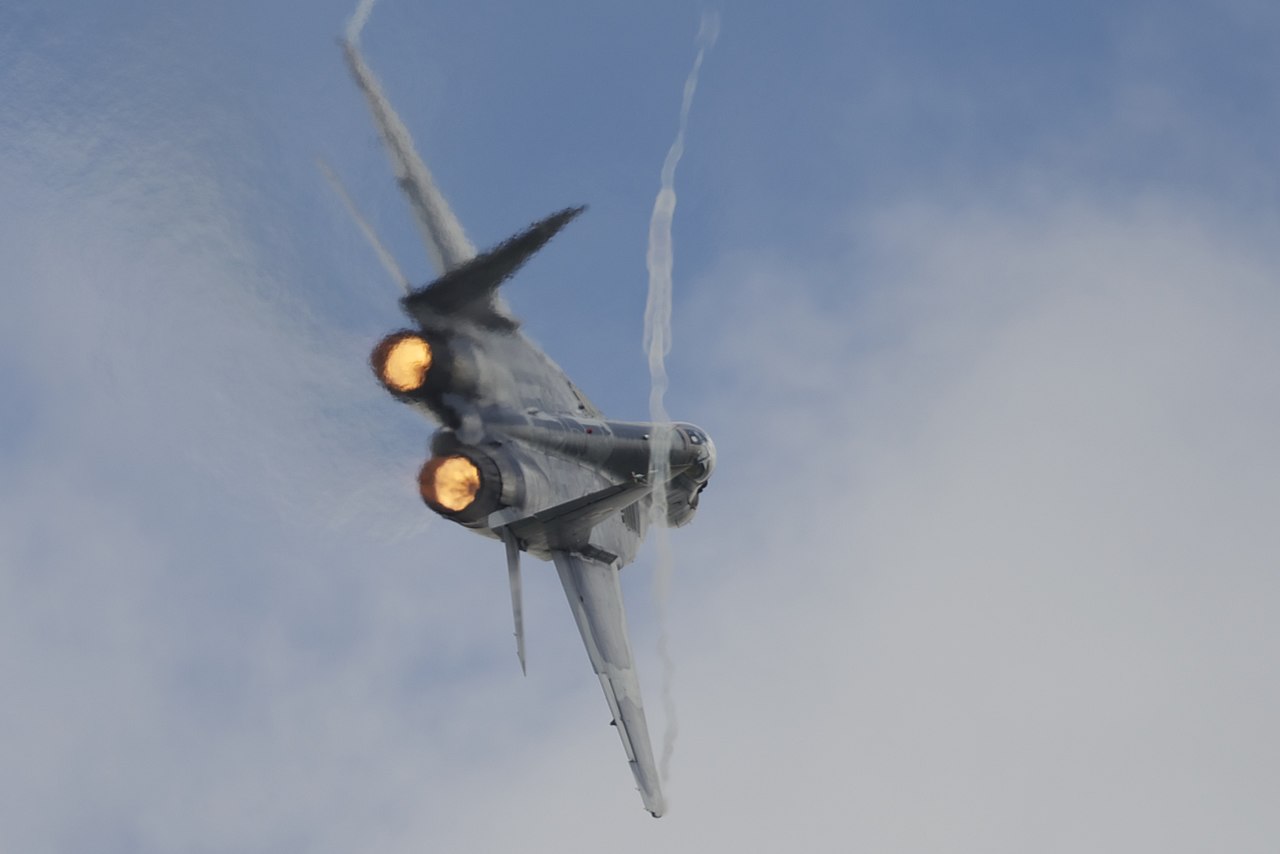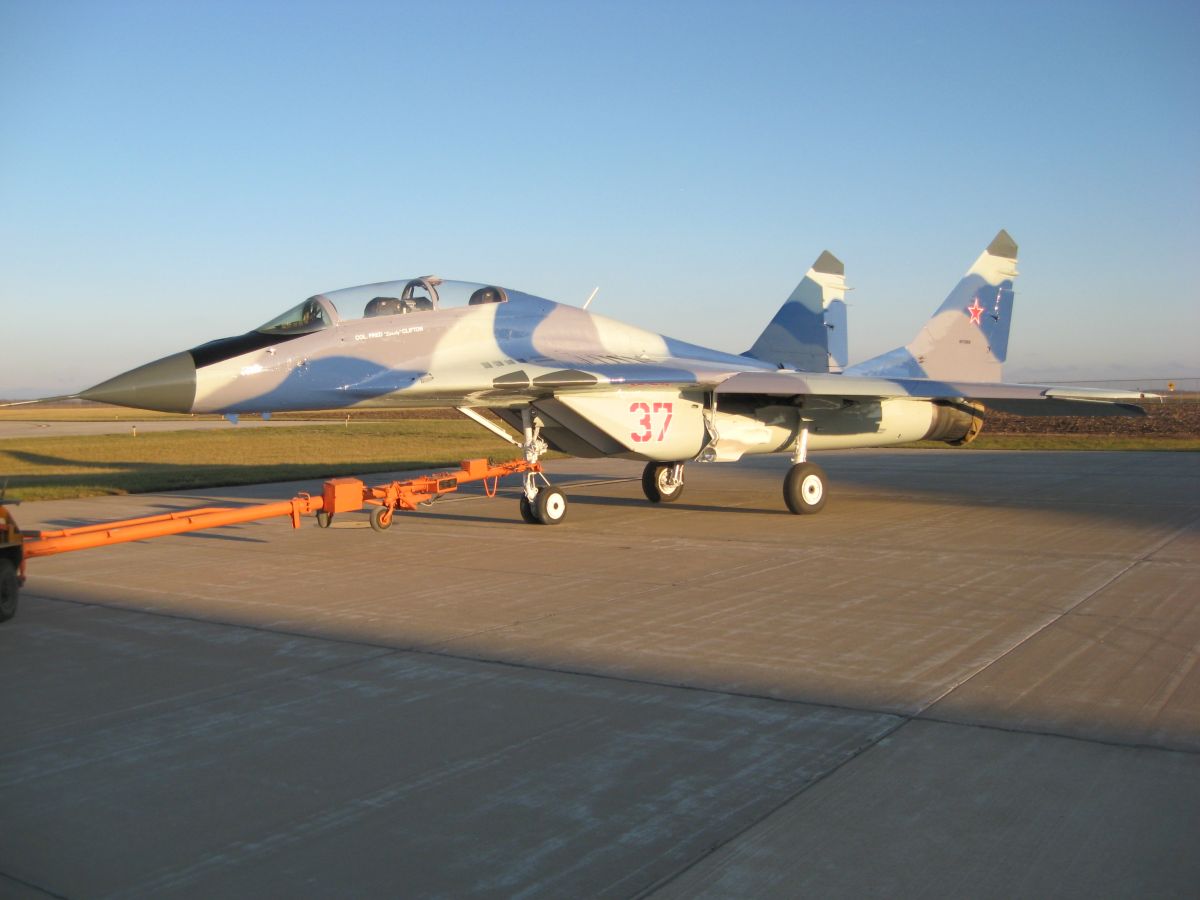Not content to wait for foreign fighter jets that NATO doesn’t want to relinquish, enterprising Ukrainians appear to have launched the #buymeafighterjet campaign to crowdfund the restocking of the nation’s fighter force. It is not immediately clear whether the effort is above board.
A slickly produced video featuring what looks to be a Ukrainian fighter pilot, wearing a helmet with the visor down, walking in front of a shot-up MiG-29, began circulating online on April 14th. Contemplating the carcasses of at least two destroyed MiGs, the pilot is philosophical about what the Ukrainian Air Force can do if resupplied with operational jets.

Donated fighters will “help me to protect my sky, filled with Russian planes that bomb my land, kill my friends and destroy our homes and everything I have ever known,” he says in Ukrainian. “Give us wings to fight for our sky.”
“Buy me a fighter jet!” he continues, boarding what appears to be an undamaged MiG. The video ends with a shot of a Ukrainian Sukhoi Su-27 throttling up its engines and taxiing.
Ukraine has lost dozens of jets in the six weeks of fighting since Russia launched its offensive, but it is unclear whether the jet in the video was recently damaged or one of many unserviceable jets destroyed in the course of the hostilities. The nation’s pilots are fighting hordes of Russian jets in the air and being routinely targeted while on the ground.
“I will fight with my whole heart to destroy the tanks, armored vehicles and war criminals — occupants,” the pilot concludes. “They would not escape neither from me and you nor from the anger of the Ukrainian people and God.”
On its website, the #buymeafighterjet project estimates the average cost of a plane at $25 million, which is subject to interpretation. It goes on to list the combat jets that the Ukrainian Air Force currently flies: Su-25, Su-27, Su-24, and MiG-29. A new MiG-29 Fulcrum can fetch $25 million, but an Su-27 Flanker can run up to $40 million a copy, according to the page.
In an unrealistically ambitious plea, the site also claims Ukrainian pilots will be able to “quickly master and successfully protect our skies on the following aircraft”: JAS-39 Gripen, Rafale, F-15, F-16, F-18, F-22, F-35. It is absurdly unrealistic that pilots could be quickly trained to fly unfamiliar aircraft, or the masses of maintainers that would need to support them. Western-built fighters are significantly more expensive and complicated than those currently operated by Ukraine, as well. Listing the F-22 and F-35 is especially preposterous, but it would be absolutely unrealistic to transfer any of these types for a massive list of reasons.
A detailed chart — perhaps a wishlist — of aircraft type, location and availability is linked, though the source of the figures is unclear. Donors are not asked to contribute directly to the fighter jet crowdfunding effort online. Instead, they are encouraged to email for more information. The site asserts its “experts will advise you on technical and legal issues.”

The U.S. objection to providing advanced weapons capable of offensive applications to Ukraine may be softening, as evidenced by the inclusion of artillery and ammunition in the most recent $800 million military assistance package approved on April 13. So far, the U.S. and other nations have donated only rotorcraft to the Ukrainian war effort. A day prior, U.S. officials said the Pentagon has no problem with Slovakia gifting its fleet of Soviet-era MiG-29 Fulcrum fighter jets to Ukraine.
In early March, the Polish government’s proposal for funneling 28 MiG-29s to Ukraine via the United States was scuttled when U.S. officials balked.
The plan, as stated by the Polish Ministry of Foreign Affairs, involved sending Fulcrums to the U.S. Air Force’s Ramstein Air Base in Germany and called on American authorities to help the Polish Air Force acquire an equivalent number of “used” fighter jets to make up for this loss of aerial combat capacity.
However, the Pentagon and U.S. intelligence officials assessed that not only would transferring MiGs to Ukraine “not significantly change the effectiveness of the Ukrainian Air Force relative to Russian capabilities,” that the move would be seen as escalatory by Moscow.

The Ukrainian government has not been shy about asking for high-performance tactical jets. Along with pleading for a no-fly-zone above his country, President Volodymyr Zelensky has repeatedly called on neighboring NATO nations to donate familiar aircraft like the MiG-29 or more advanced western types. Ukraine paying for jets isn’t exactly a new idea, either. Kyiv would likely be open to paying something for second-hand aircraft if someone was willing to sell them to the country at a reasonable price.
Raising cash or in-kind donations from civilians to pay for military equipment is nothing new, either. Think U.S. government war bond drives during the World Wars, or Confederate Ladies Gunboat Association raising $115,000 by 1862 to build the ironclad CSS Georgia during the American Civil War.
More recently, the Czech government has coordinated the crowdfunding of weapons and equipment on behalf of Ukraine, reportedly raising $29.6 million in a single month. That more than paid for the $18.3 million in equipment the Czech Ministry of Defense made available for purchase with the donated funds. The funds went to the Ukrainian Embassy in Prague, which had first launched its own crowdfunding campaign in the country just days after Russia launched its all-out invasion.
Ukraine’s National Bank is not above asking for outside funding to pay for the war effort. As of mid-March it had raised $40 million to support the nation’s armed forces and humanitarian assistance, according to Reuters. Anyone can donate directly to the bank through its website using mobile payment applications, credit cards and other methods.
Ukrainian aviation company Antonov has even put out a crowdfunding appeal to help somehow revive the now-destroyed lone flying example of the An-225 Mriya cargo plane. Fighting over Hostomel Airport outside of Kyiv earlier in the conflict led to the destruction of the An-225.

When it comes to crowdfunding fighter jets, it is more complex. There really aren’t many flyable and familiar Soviet types of relevant capability around for Ukraine to buy. NATO members that have the aircraft Ukraine needs could see funds as a way to help offset the loss of airframes, although many other aforementioned political hurdles exist. In fact, the U.S. may be a decent source of a handful of these aircraft itself.
There are MiG-29s for sale in the United States, at least one of which is flyable. Owned by Don Kirlin, proprietor of the adversary air contractor Air USA, he has been trying to sell his flyable two-seat MiG-29UB for years, along with three other MiG-29s. One of them is another two-seater-UB model that could be made flyable with relative ease, according to past advertisements, while the other two are single-seaters and serve as spare parts donor airframes.

The UB models do not have a radar, but have an infrared search and track (IRST) system and are still combat-capable if properly re-equipped. Past listings mention that Kirlin has spare radars and IRSTs as well. The flyable MiG-29UB is still for sale by Raptor Aviation for $4.65M. Oddly enough, the 1986 model-year Fulcrum came from Ukraine and was overhauled by the MiG-29 depot in Lviv which is now partially destroyed.
The War Zone has reached out to Kirlin in recent weeks to inquire about the possibility of sending his MiG-29s to Ukraine. He couldn’t comment at the time, but said he would get back to us. Doing so would incur a massive amount of red tape, but maybe that could be fast-tracked by the U.S. government.
There is another MiG-29UB that is owned by entrepreneur and now astronaut Jared Isaacman.
As we have detailed in the past, the U.S. government itself retains a small clandestine handful of the same aircraft Russia flies in combat, primarily MiG-29s and Su-27s, some of which actually came from Ukraine. But exporting these aircraft to Ukraine, at least publicly, would draw attention to the secretive programs that keep these aircraft flying against their U.S. counterparts for highly advanced training and test and developmental support.
Maybe the best possibility, although it may not be ideal, is to try to acquire deeply upgraded MiG-21s along with advanced electronic warfare pods. While this may seem like a major mismatch against the latest Russian fighters, these upgraded MiG-21s have proven very deadly when combined with the right tactics, even against the world’s best 4th generation fighters. The MiG-21s are also very easy to maintain and cost less than medium-to-heavy Soviet fighters to buy and sustain over time.

The bottom line is that while this crowdfunding of fighters for Ukraine’s increasingly depleted air force sounds intriguing, the reality of actually making it work is a whole different story. And regardless of what money is in the bank or not, you need relevant aircraft to buy in order to make any impact at all. Beyond that, yes Ukraine needs more familiar fighters, but they also need to begin training on a 4th generation western type. It will take many months to train pilots and support crews on these new aircraft. Every day waited is just one more day longer it will take for Ukraine to realize an enhanced, enduring, tactical fighter capability. You can read more about this situation in this previous War Zone article.
Contact the author: Dan@thewarzone.com and Tyler@thedrive.com

